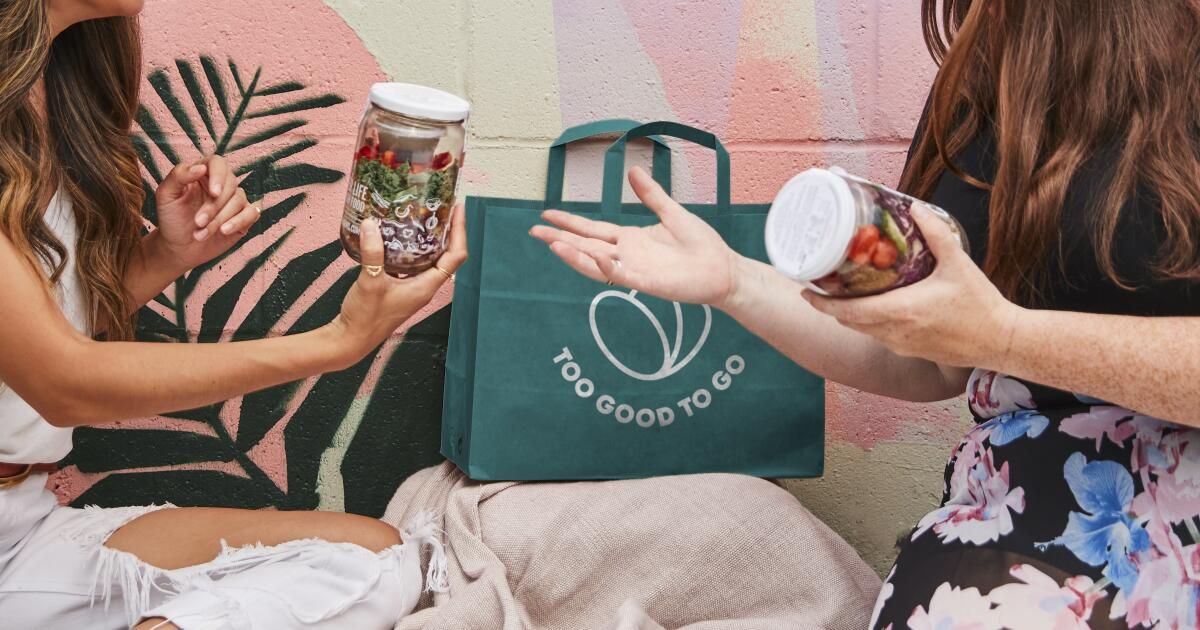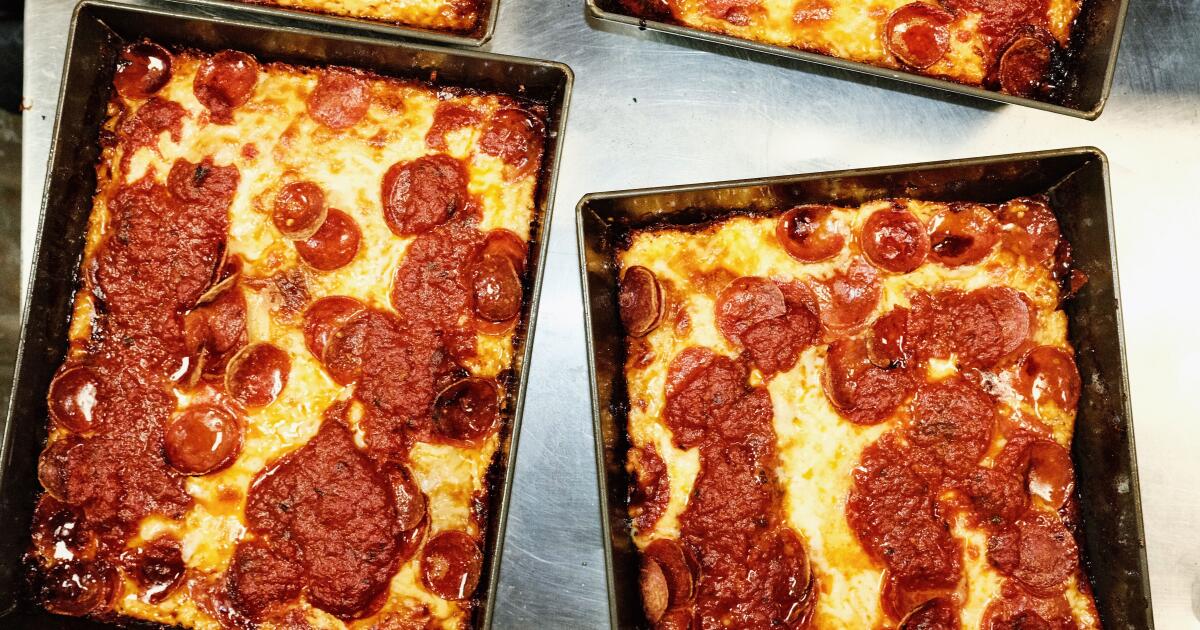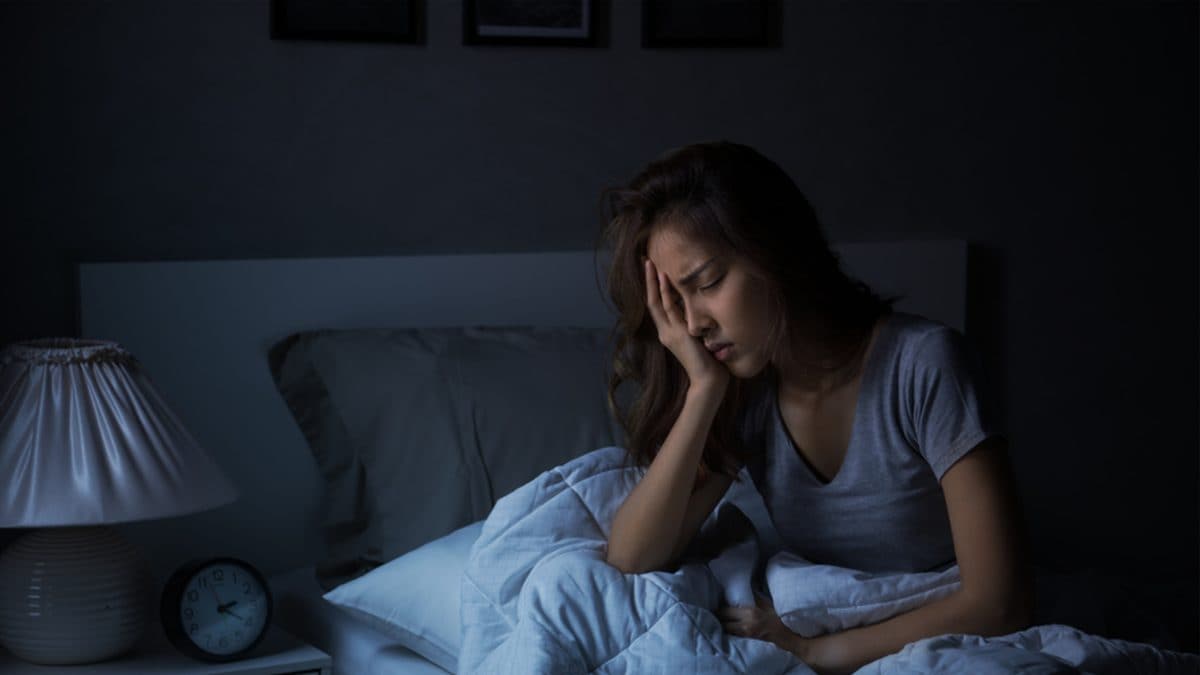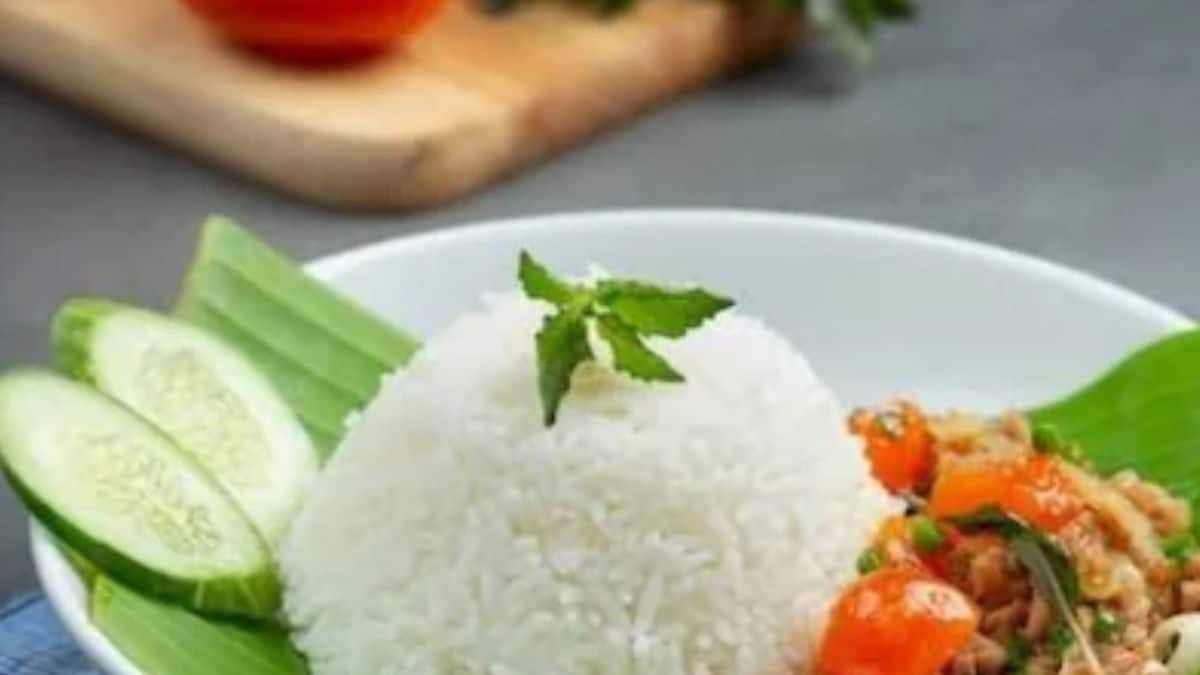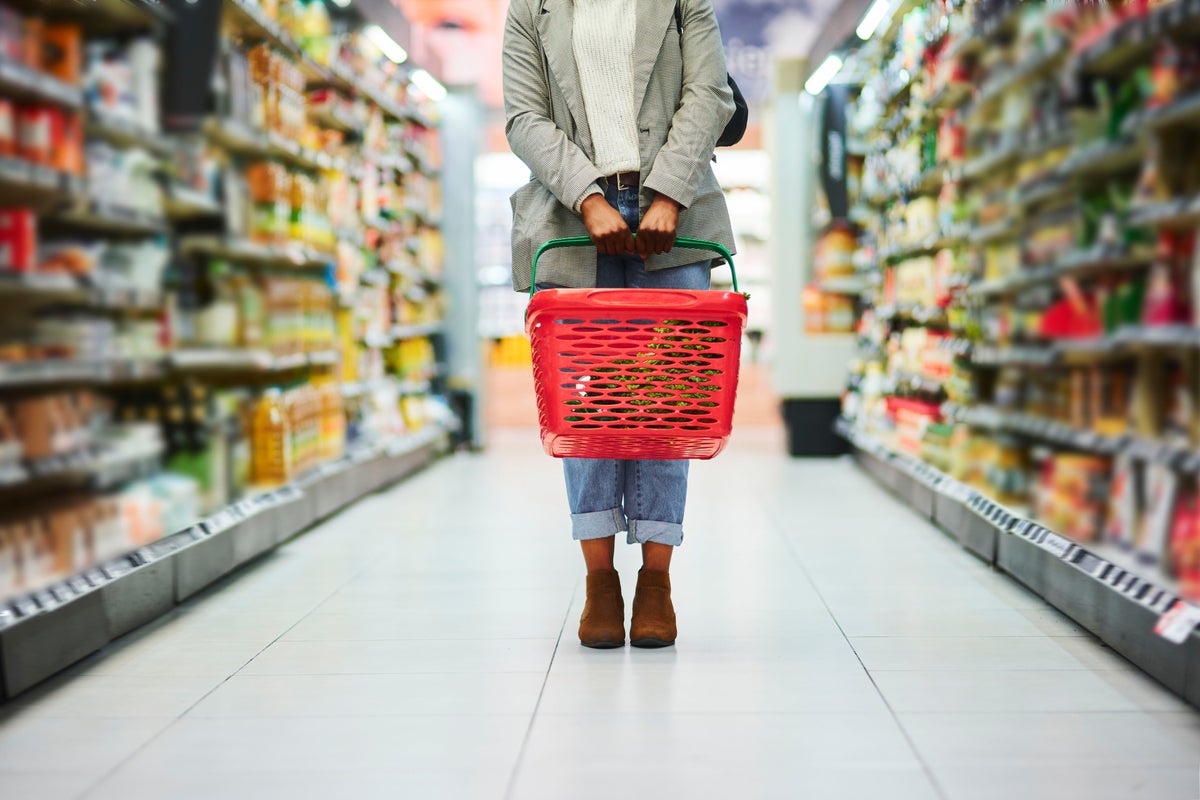Last week, I saved $59 and helped reduce food waste at five Los Angeles restaurants by eating pastries, Chinese food, and lasagna. I also drank two cups of bubble tea.
For two days, I left my breakfast, lunch and dinner in the hands of an app called Too Good to Go. It's a Danish company that aims to put surplus food and drink destined for the trash into the hands of diners at discounted prices. The only problem? You don't know what you're getting until you pick it up.
There are more than 1,400 participating stores in the Los Angeles area. Last week, Whole Foods appeared on the app with prepared meals and baked goods from the grocery chain.
Every morning, I opened the app and looked through the options available in my area. There were dozens of doughnuts and pastries from bakeries and coffee shops. Many were from well-known chains like Coffee Bean & Tea Leaf and Krispy Kreme, as well as a few smaller companies.
Pastries included in a surprise bag from Heirloom Bakery and Cafe in South Pasadena, via the Too Good to Go app.
(Jenn Harris/Los Angeles Times)
Prices range from $4.99 to $9.99. There are no fees and you pay up front for what you order. Offer descriptions are limited, and many places don't know what they'll be able to sell until the morning of the day you buy. It can be tricky to navigate if you have a food allergy or other dietary restriction. You can filter for vegetarian and plant-based items, but depending on your location, offers may be limited.
For each store, there is a pickup window, a price, an original value, and a star rating.
“Our goal is to be everywhere, in every store near you,” Too Good to Go spokeswoman Sarah Soteroff said on a recent call. “It’s important to us to stock food from everywhere, from any convenience store to high-end grocery stores, local coffee shops or big chains.”
Too Good to Go started in Copenhagen in 2016, expanded across Europe, to Canada and then to the US. It launched in Los Angeles in 2022. Later this year, it will be in Australia.
I ordered five surprise bags in two days and spent a total of $23.96.
“The average price of a bag should be one-third less than the retail price,” Soteroff said. “The store determines the price, but that’s the general rule.”
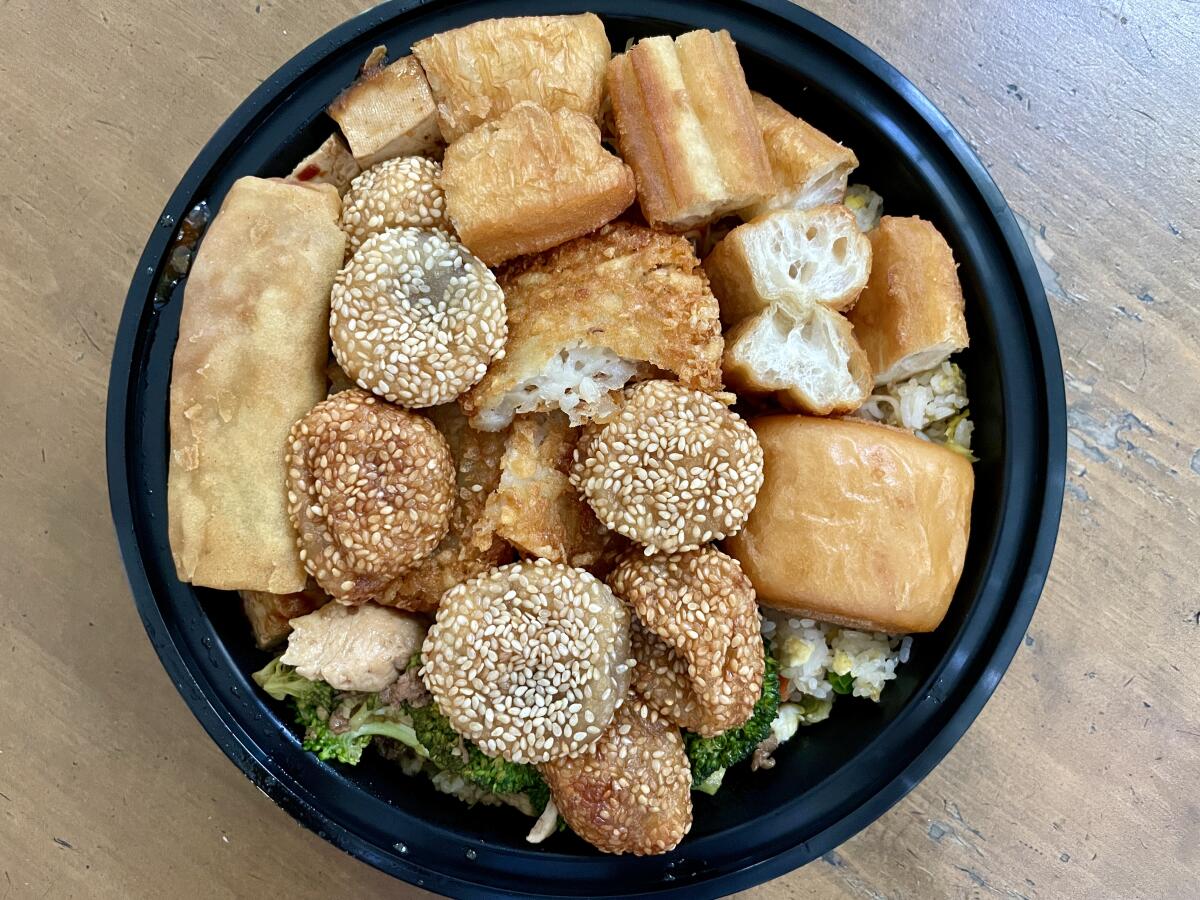
Chinese food from Happy Ayce Hot Pot restaurant in Rosemead, purchased through the Too Good to Go app.
(Jenn Harris/Los Angeles Times)
At Heirloom Bakery & Cafe in South Pasadena, I was handed a white paper bag that looked like it weighed a few pounds. I prepaid $5.99 for the mystery bag, which was listed on the app as having an original value of $18.
Too self-conscious to open the bag while I was still in the store, I waited until I got into the car to open it. There were three cookies, two muffins, two buns, and a croissant inside. It was enough for breakfast, a snack, and a dessert for the entire week.
Owner Sally Cook has been selling surprise bags on the app since March 2023. She makes four bags each weekday and five a day on the weekend. It's a mix of day-old pastries she used to sell over the counter at a discounted price, same-day breads, baked goods that may not have turned out aesthetically perfect for whatever reason, and surplus from events.
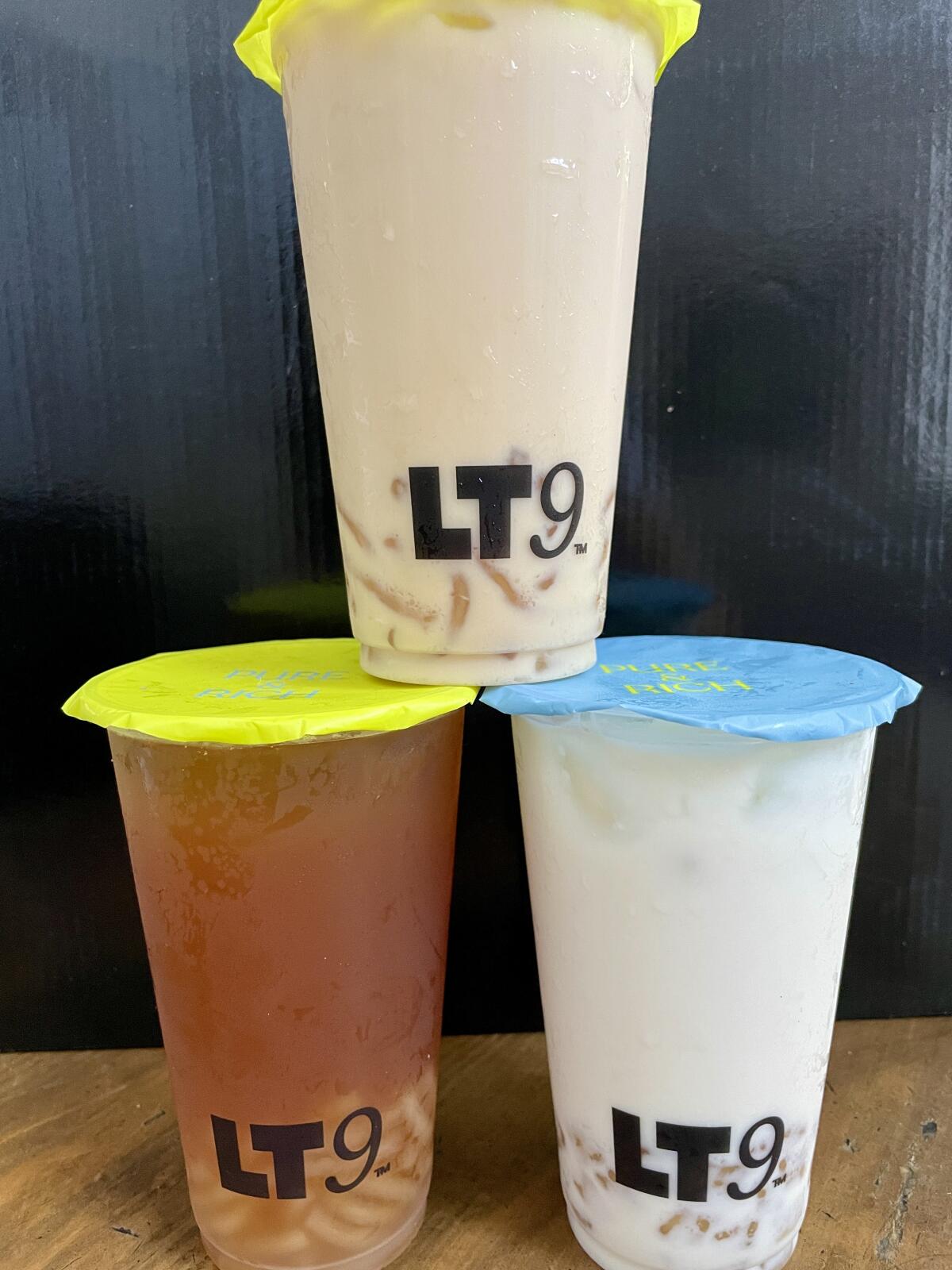
A selection of teas from LT9 in Pasadena. The teas were part of a goodie bag purchased through the Too Good to Go app.
(Jenn Harris/Los Angeles Times)
“It’s a token business,” Cook said on a recent call. “There’s a fee, but it’s something I wasn’t making money on anyway. Everyone’s margins are getting smaller and it’s really nice to have a little extra income.”
Restaurants pay a $1.79 fee to the app for all transactions, regardless of the cost of the order. For Cook, the quarterly check she receives and the reduction in food waste are enough to keep her on the app.
She has also noticed a new group of customers, some of whom have become regular customers after purchasing surprise bags.
“It’s a good way for someone to try some stuff without spending a lot of money,” she said. “We’re pretty generous with what’s in the bags and usually put in a little more than the estimated value.”
Looking for something that looked more like a full meal, I picked up a $4.99 surprise lunch at Happy Ayce Hot Pot in Rosemead, which was originally priced at $15. The woman who greeted me at the door already had my food in her hand. It was a single plastic takeout container, piping hot and with what looked like chopped youtiao (fried dough) about to burst out of the lid. This time, I asked the woman who handed me the food if she knew what was in the container. She shrugged, then walked back into the kitchen.
I held on to the element of surprise until I got home. If it really was a container full of Chinese doughnuts, I wouldn’t be disappointed. When I removed the lid, I found enough food for at least two, with a pile of chicken fried rice, stir-fried noodles, tofu in brown sauce, and beef and broccoli stacked beneath the youtiao, an egg roll, sesame balls, and fried red beans and French fries.
I needed an afternoon pick-me-up and searched the app for a caffeinated drink. Boba tea shop LT9 in Old Pasadena, a place I’d been meaning to try for weeks, popped up on the app with a grab bag of boba for $6.99, up from $21.
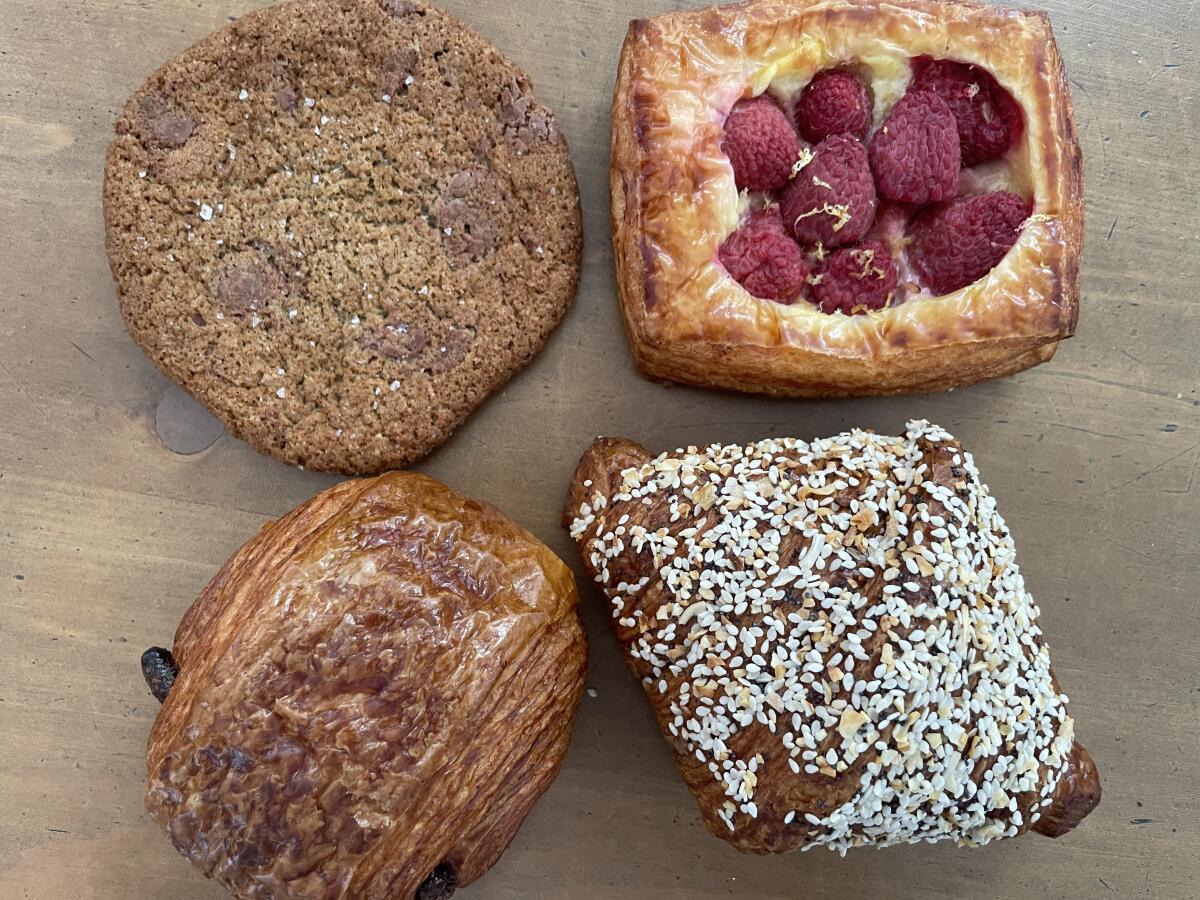
A selection of pastries from Blue Bottle Coffee, purchased through the Too Good to Go app.
(Jenn Harris/Los Angeles Times)
I waited about 10 minutes for my three drinks, including a caffeine-free winter melon tea with boba cubes, a Ceylon black milk tea with soft boba noodles, and an oolong milk tea with more of the same noodles.
The shop has been on the app for about a month and also offers bags of boba and surprise food bags. The woman at the counter told me that the selection varies each day based on what the shop wants customers to try, but that there is usually boba in each of the drinks to help curb the shop’s major food waste. Once the boba is made, it is allowed to sit for up to four hours before being thrown away.
“It gets too hard and then we have to throw it away,” said the woman at the counter.
Breakfast the next morning was a bag of pastries from Blue Bottle Coffee for $5.99. I couldn't wait for the surprise to arrive, but the thrill of a deal was even more exciting. I grew up in a coupon-using household. There's nothing more impactful than saving money.
Inside the bag was a chocolate croissant, a regular croissant, a cheese danish, and a cookie. I decided to check the price of the items on the website. Before tax and tip, the total should have been $22.40.
Lunch consisted of leftover Chinese food and a cookie. Dinner would be a $5.99 surprise from Flintridge Pizza Kitchen in La Cañada Flintridge.
While waiting for my order, I noticed the woman next to me on the app.
“Too good to go?” I asked. She nodded enthusiastically.
La Cañada Flintridge resident Jaclyn Barulich signed up for the app last year but has only used it a few times.
“A couple of my orders were cancelled,” she said. “This place is usually sold out, so when I saw it was available, I jumped at it.”
He used the app to try out a new bakery down the street. He told me about the loaf of bread he bought at one restaurant and the sandwiches from another.
“It’s nice to see that food isn’t being wasted,” she said. “That’s why I downloaded it. And I wouldn’t have known about that bakery if it wasn’t for the app.”
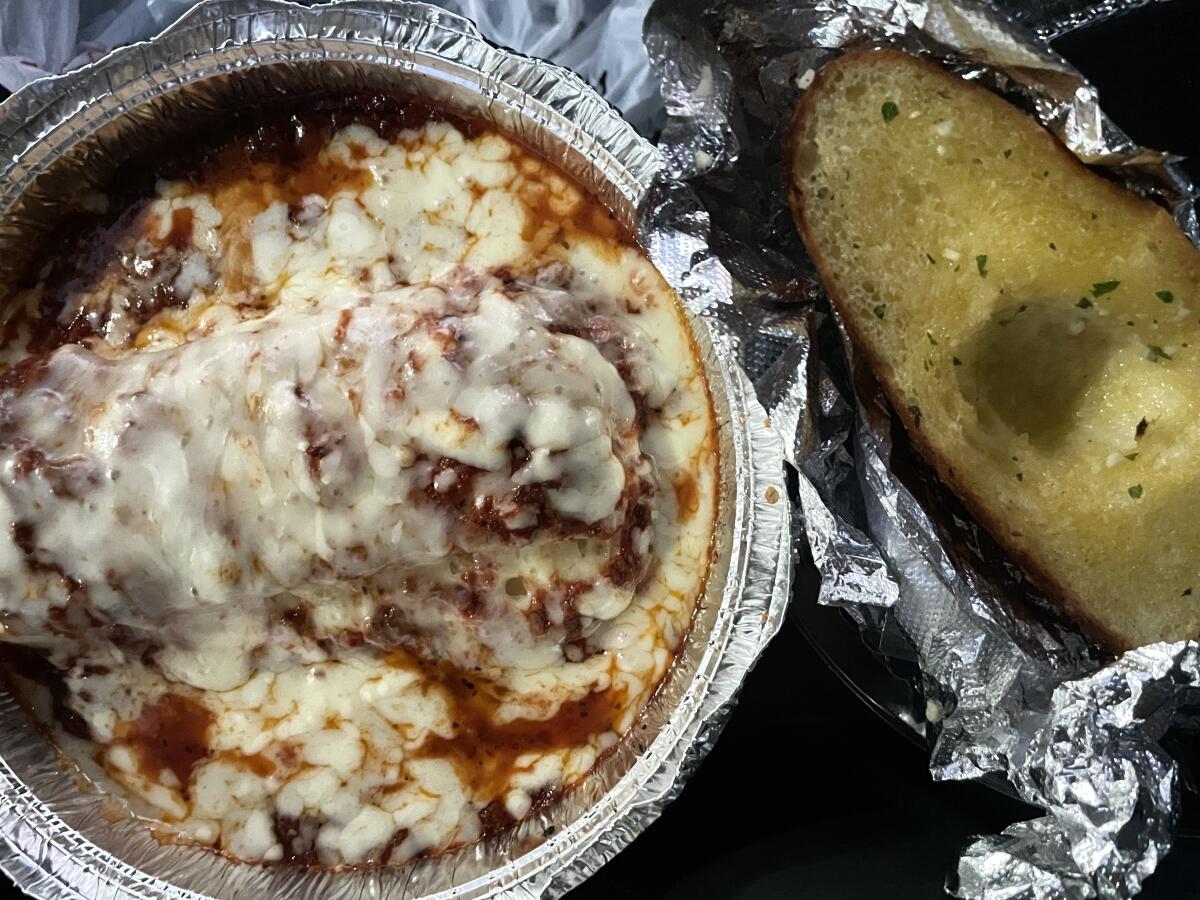
Lasagna and garlic bread from Flintridge Pizza Kitchen in La Cañada Flintridge. The dish was offered as a surprise dinner through the Too Good to Go app.
(Jenn Harris/Los Angeles Times)
Our identical surprise meals ended up being a slice of lasagna and a slice of garlic bread. We paid $5.99. The lasagna dish is listed on the restaurant's menu at $15.99.
Soteroff said Too Good to Go equates each grab bag to one meal, though I'd say what's in each bag is enough for two or more. Using that metric, the company claims to have prevented 13 million meals from going to waste nationwide. In Los Angeles, that number is 1 million.
“We saved consumers about $9 million on food they would have otherwise paid full price for,” he said. “And we helped our partners earn $3 million on produce they would have otherwise thrown away.”

